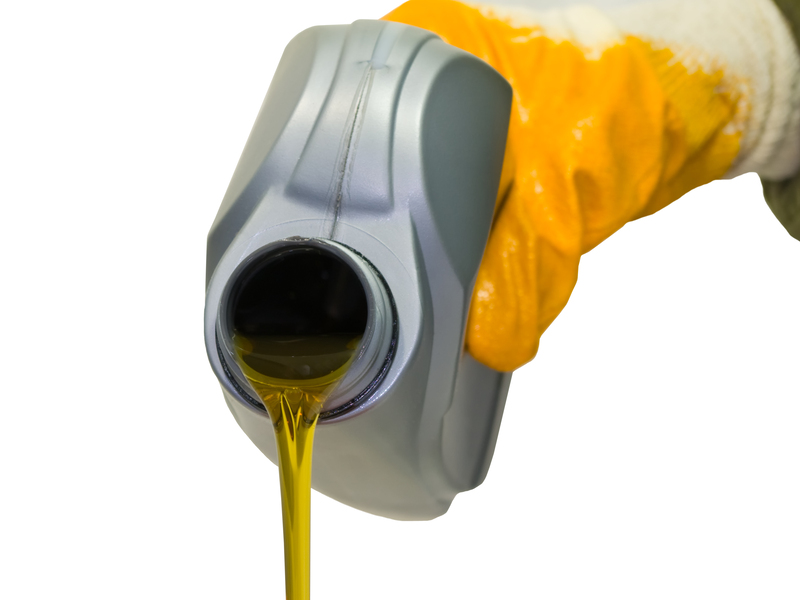Finding Take-Back Programs for Damaged Cookware: A Complete Guide
Are your pots, pans, or nonstick skillets showing signs of wear and tear? Disposing of old cookware sustainably is crucial in today's environmentally conscious world. Take-back programs for damaged cookware provide a responsible solution, allowing you to recycle worn-out pots and pans instead of tossing them into landfills. This comprehensive guide will show you how to find cookware recycling programs, what to look for, and why it matters for both your kitchen and the environment.
Why Take-Back Programs for Damaged Cookware Matter
Every year, millions of pots, pans, and bakeware end up in dumpsters and landfills. These discarded items contain metals and nonstick coatings that don't biodegrade, potentially leaching chemicals into the environment. Traditional curbside recycling programs rarely accept cookware due to mixed materials and handles made of plastic or wood.
Take-back programs for old cookware, however, are designed by manufacturers, retailers, and some specialty recycling companies to handle cookware responsibly. Whether your pan is stainless steel, aluminum, cast iron, or nonstick, these programs ensure the materials are processed properly--reducing environmental harm and saving resources.

How Do Cookware Take-Back Programs Work?
Effective cookware donation and recycling programs follow a straightforward process:
- Collection: You drop off or ship your damaged pots and pans to a designated location.
- Sorting: The program sorts items by material: metal, ceramic, or nonstick-coated.
- Recycling: Usable metals are melted down and repurposed; nonstick coatings are handled following environmental guidelines.
- Reuse or Upcycling: Some programs repair slightly damaged cookware for donation to charities or community kitchens.
These steps ensure that your outdated saucepans or warped skillets get a second life, reducing waste and promoting a circular kitchen economy.
How to Find Take-Back Programs for Old and Damaged Cookware
Searching for cookware return and recycling programs may seem daunting, but there are reliable ways to get started:
1. Manufacturer-Sponsored Take-Back Programs
Several reputable cookware brands offer in-house recycling services. Some of the best-known manufacturers include:
- Calphalon ReNew Program: Accepts all brands of cookware. You ship your items to their recycling partner and receive a discount on new purchases.
- Le Creuset: Offers local drop-off events or partnerships with recycling facilities during special campaigns.
- Cuisinart's GreenGourmet: Encourages consumers to return selected cookware types for proper recycling.
Check your cookware brand's website or contact customer service. Many have web pages dedicated to cookware recycling initiatives and take-back instructions.
2. Retailer and Storefront Take-Back Events
Major home goods retailers and special eco-stores periodically host take-back events:
- Williams Sonoma: Hosts annual events where you can drop off used kitchen tools and cookware for safe disposal.
- Sur La Table: Some locations offer trade-in programs with store credit or recycling benefits for participants.
- Local kitchen supply stores: Ask about partnerships with recycling companies or donation initiatives.
Follow your favorite kitchen stores on social media or subscribe to their newsletters to stay updated about future events.
3. Scrap Metal Recycling Centers
For metal cookware recycling (cast iron, stainless steel, aluminum), many local scrapyards and municipal recycling centers accept these items--especially if non-metal parts are removed.
- Find Local Centers: Search terms like "scrap metal recycling near me" or check with your municipal waste website.
- Preparation: Remove any non-metal handles or lids.
- Ask About Nonstick Pans: Some centers do accept nonstick cookware if the Teflon is not peeling, but always check their rules.
This option is best for pots and pans with no plastic, wood, or large composite parts.
4. Community Recycling Days and Eco-Fairs
Many cities and counties organize community recycling days as part of sustainability initiatives. These events often accept kitchenware and small appliances for responsible handling.
- Check your city council or local government's events calendar.
- Select eco-fairs partner with recycling companies for cookware collections.
- Some organizations offer pick-up service for seniors or those unable to travel.
It's a community-focused way to dispose of damaged cookware and connect with other environmentally-minded neighbors.
5. Specialty Cookware Donation Programs
If your old pots and pans are still usable but just outdated or lightly worn, consider donating them to local charities or organizations. Some nationwide examples include:
- Habitat for Humanity ReStores: Accept gently used kitchen equipment for resale to support their programs.
- Local shelters and soup kitchens: Often in need of functional cookware for meal preparation.
- Freecycle and Buy Nothing groups: Post your items for pick-up among neighbors.
For truly damaged cookware, these groups usually do not accept items--but they're excellent for equipment that's functional but redundant.
Recycling Specific Types of Damaged Cookware
Each type of cookware comes with unique recycling requirements:
Recycling Nonstick and Teflon-Coated Pans
- Many municipal programs do not accept nonstick cookware due to the Teflon or similar coatings.
- Check with take-back programs specifically handling nonstick surfaces--some manufacturers accept their products back.
- If the pan is aluminum or steel, remove plastic/wood handles and seek out a metal recycler willing to take nonstick cookware.
Cast Iron Cookware Recycling
- Cast iron is highly valued by scrap metal recyclers--it can easily be melted down and reused.
- If just rusty or slightly damaged, consider restoring or donating rather than recycling.
- Check if any local blacksmith shops or community centers recondition cast iron pans for charity uses.
Stainless Steel and Aluminum Cookware
- Most recycling centers accept these metals if plastic/rubber/wood components are removed.
- Take-back programs for stainless or aluminum cookware are common, especially among large brands.
Ceramic, Glass, and Enamel Cookware
- Traditional curbside recycling typically does not accept ceramics or glass bakeware.
- Contact specialty recycling facilities, or ask if your city sponsors occasional collection drives for ceramics and glass.
What Happens to Your Damaged Cookware After Collection?
Understanding the end-of-life process for your old pots and pans can help you choose the best recycling route:
- Metals (steel, aluminum, cast iron): Sorted, melted down, and used for making new products or construction materials.
- Nonstick coatings: Carefully removed and disposed of following environmental safety standards.
- Handles and accessories (plastic, silicone, wood): Processed separately--if not recyclable, they're sent to energy recovery facilities.
- Ceramics or glass: Crushed and used as aggregate for paving materials, mosaics, or industrial fill (when recycled).
By participating in cookware take-back and recycling programs, you ensure that every part of your damaged kitchenware is disposed of as sustainably as possible.
Benefits of Using Take-Back Programs for Old Cookware
- Environmental Responsibility: Keeps harmful coatings, metals, and plastics out of landfills.
- Resource Efficiency: Reuses valuable metals, saving energy and reducing the need for new mining.
- Community Support: Donated cookware supports charitable kitchens and families in need.
- Convenience: Many programs provide drop-off or mail-in services.
- Discounts & Rewards: Manufacturer-sponsored take-back programs often offer trade-in rebates for new cookware purchases.
Tips for Preparing Damaged Cookware for Recycling
- Clean Thoroughly: Remove food residue, grease, or burnt-on deposits for safer handling.
- Remove Non-Metal Parts: Detach all handles, lids, or silicone grips as requested by your recycling center.
- Group by Material: Separate cast iron, stainless steel, aluminum, and nonstick items to streamline the recycling process.
- Check for Hidden Damage: Sharply broken or jagged cookware should be wrapped or contained for safety.
- Package Securely (for mail-in): Use sturdy boxes and padding if shipping to a manufacturer or third-party recycler.

Common Questions About Finding Cookware Recycling Programs
Can I put my old pans in the curbside recycling bin?
Rarely. Most curbside programs do not accept cookware, especially if it has nonstick coatings or handles. Look for specialty centers or take-back initiatives instead.
Are old nonstick pans hazardous?
If the nonstick coating is flaking, it can contain potentially harmful chemicals. Using a take-back program for nonstick cookware is the safest way to manage disposal.
What should I do if my city has no cookware recycling?
Seek out mail-in take-back programs from brands or eco-organizations. Alternatively, contact local scrap yards or check community environmental groups for special collection events.
Do take-back programs accept glass lids or ceramic handles?
Often not, unless they specify so. Remove lids and handles before recycling or disposing of them according to your local waste management policies.
Conclusion: Make Sustainable Choices with Take-Back Programs for Damaged Cookware
Modern kitchens deserve modern environmental responsibility. By seeking out take-back programs for damaged cookware, you help reduce waste, save resources, and protect our planet.
Key steps to take:
- Check with your cookware manufacturer for recycling or trade-in programs.
- Follow retailer announcements for store-based take-back and recycling events.
- Consult local scrap metal yards for metal pans and pots.
- Join community and city recycling days for specialty collections.
- Donate usable items to charitable kitchens or shelters.
It takes just a little effort to responsibly recycle old pots and pans, but the positive impact is lasting. Make your next cookware upgrade sustainable by using a take-back program--and inspire friends and family to join you in sustainable kitchen living!
Want more resources?
Bookmark this page for updates, or contact your favorite cookware brands about their latest recycling initiatives for damaged cookware. Together, we can keep our kitchens--and our planet--renewed and thriving!